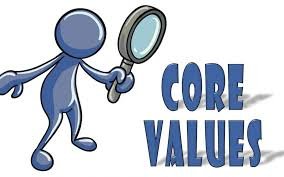At the executive level, communication is leadership. It’s how you inspire confidence in the boardroom, align peers across the C-suite, and guide your team through complexity and change. Yet too many leaders underestimate its power — or reduce it to polished presentations. In reality, executive communication is one of the most critical and underrated skills for leaders, as it shapes how others perceive their competence, credibility, and readiness for greater responsibility.
Strong executive communication isn’t about being rehearsed; it’s about being clear, concise, structured, and human. At the highest levels, people do not have time to sift through ambiguity or wait for you to “get to the point.” They want to know: What’s the headline? What are the options? What do you recommend? And how will this impact the business? Leaders who answer those questions directly and authentically don’t just communicate - they influence outcomes.
Four Principles for Executive Communication
1. Clarity. Start with your purpose or goal. What do you want the listener to walk away with? Senior executives process a constant flow of information - if you do not lead with clarity, your message will get lost. Think in headlines, not paragraphs.
Instead of: “We’ve been running into some inefficiencies with the vendor, and we’ve looked at several options, and here’s where we’re leaning…”
Try: “We’ve narrowed vendors to three options — here’s our recommendation and why.”
Of course, you want to keep in mind who your audience is and what they are seeking. If context is essential, make that brief, then delve into options and recommendations.
Structure matters. Neuroscience shows our brains like to receive information in chunks. Label your folders first (e.g., three priorities, two risks, one recommendation) before explaining. Transition with precision so the audience knows where you are. E.g., “Before moving on to my second point, any questions you might have?” If people can repeat two out of three of your points, you’ve succeeded.
2. Conciseness. Concise does not mean oversimplified; it means cutting through noise. Avoid burying the lead or drowning in detail. Lead with the answer, then layer in context if asked or needed.
Example: “The pilot increased customer retention by 8%. To scale, we need additional resources. Here are the three scenarios of our growth path…”. This shows strategic thinking by anticipating the best, middle, and least desirable paths.
Concise leaders respect others’ time and signal confidence in their message.
3. Collaboration. Executive communication is not a monologue — it’s a conversation. The best leaders create space for dialogue, pause to consider reactions, and invite others in. Ask clarifying questions like: “Would you like me to share the context or jump into the recommendation?” This allows others to co-create the outcome and fosters alignment.
4. Connection. Do not just transmit information - build rapport. Leaders who connect authentically stand out in boardrooms often filled with data-heavy slides. Be human. Start with appreciation. Share a quick acknowledgment or observation. Comment in a Slack thread to reinforce alignment. As Maya Angelou said, “People will forget what you said, but they will never forget how you made them feel.”
Additional Practices That Elevate Executive Communication
· Frame and Reframe. Gregory Bateson’s concept of framing highlights how you say something often shapes its impact more than what you say. A “frame” signals how others should interpret the conversation. For example: “I’d like to check alignment on process” sets the frame as collaborative, not corrective. Reframing is equally powerful when dynamics shift: For instance, “Instead of seeing this as a setback, let’s view it as feedback on what’s working and what isn’t” turns frustration into learning. Or: “This isn’t about assigning blame - it’s about uncovering what will help us succeed next time” moves the tone from defensive to forward-looking.
· Provide Context. Senior leaders juggle countless priorities - they will not always remember the details of past discussions. Anchor them quickly: “As we agreed last month…” or “This builds on the pilot we launched last quarter.” Context helps them connect the dots without having to dig.
Always link back to the bigger picture and bottom-line impact: “Here’s how this decision affects revenue, customer trust, and our long-term positioning.” Context is not clutter - it’s a compass that shows why the issue matters now and where it leads next.
· Command the Room. Strong leaders do not just dominate the conversation - they direct it. Set the pace and focus by managing Q&A with confidence: pause before answering, defer off-track details, and keep attention on outcomes. For example: “That’s an important point—let’s capture it for follow-up, and for now stay with the decision at hand.” This signals control of the flow while respecting contributions.
Commanding the room also means knowing when to open the floor. A well-timed pause - “Let’s make sure others have space to weigh in” - shifts the tone from one-way authority to shared dialogue. The real mark of presence is not just steering discussion; it’s creating a space where others want to lean in.
Executive communication is not about being the loudest or most polished voice in the room. It’s about being clear, structured, concise, collaborative, and authentic. The leaders who excel at it make others’ jobs easier — they create clarity in complexity, surface decisions, and build alignment. That’s what makes them trusted voices at the table.
Reflection Question: How will you ensure your next executive communication leaves leaders confident in both you and your message? Comment and share below; we’d love to hear from you!
Quote of the Day: “The art of communication is the language of leadership.” – James Humes
The next blog in this series 2/9 will focus on communication essentials.
As a leadership development and executive coach, I work with leaders to sharpen their executive communication skills. Contact me to explore this topic further.
How do you ensure your message is clear?




















